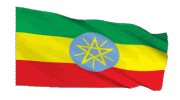About Ethiopia
|
|
ethiopia

Ethiopia is a nation which was born on the highlands of East Africa several thousands of years ago by the fusion of the indigenous population with immigrant Semites. The reconstruction of the ancient history of Ethiopia is an especially difficult and tiring task since written documents are few and archeological research here is only in its youth. Ethiopia’s contribution to the study of human evolution is very significant. The oldest hominid species is known as Australopithecus Afarensis, so called because some of the most important remains of the species have been found in Afar, Ethiopia. The most famous of these findings is that of the Lucy) or Denqenesh, as we Ethiopian prefer to call it) dated back to be 3.18 million years old found in Hadar in the Afar region in 1974. Ethiopia contributes to five major drainage systems and these systems are; the Nile River System, the Awash Valley, the Gibe/Omo–Gojeb River System, the Genale/Juba–Shebele River System and, finally the Ethiopian Rift Valley Lakes System each of them has had a profound impact on the life and history of the Ethiopian people and the horn. Today, Ethiopia though still faithful to its rich traditions, is adopting itself to fulfill its duties as a modern nation. Domestication of Plants & Animals In EthiopiaThe beginning of domestication of plants and animals is generally placed at about 10,000 years before present. The process of domestication took place independently in various parts of the world. It appears that it was around 4000 – 6000 years ago that the domestication of plants and animals began took place on a large scale in north Ethiopia. The plants of the grass type which were domesticated here were tef (Erogrostis tef) and dagusa (Eleusine coracana). Other plants which originated in north Ethiopia and the horn were the oil seed nug (Guizotia abyssinica) and the ensat (Ensete venticosum). There is evidence for the domestication of cattle about the same time around Lake Basaqa, near Matahara.
History of Ethiopia
The history that connects Ethiopia to its past is based on two major sources. They are primary sources and secondary sources. The primary sources may include documents written at the time as well as material remains such as ruins of buildings, monuments, tools, ornaments, pottery, coins and other relics. When it comes to the secondary sources, they mainly include oral information and other historical reconstructions. As far as the Ethiopian history is concerned, historians use a combination of both sources mentioned above as input. The Historiography Of Ethiopia In the early twentieth century, a number of Ethiopian scholars started writing on various aspects of Ethiopia’s past. The 1960s may be considered as the most important decade in the evolution of Ethiopian historiography. The Ethiopian Peoples & Their Languages The approximate population of Ethiopia is 94.1 million (2013). Ethiopia is marked by ethnic and linguistic diversity. Afro-Asiatic and the Nilo-Saharan are the most relevant ones in Ethiopia. The Afro-Asiatic language family is divided into three linguistic groups and they are; Cushitic, Semitic and Omotic. Most Ethiopians speak either a Cushitic or Semitic language. Amharic, a member of the Semitic is used now as a working language in Ethiopia.
Religion
Christianity (70%) and Islam (17%) are widely practiced in most communities of Ethiopia where as Judaism and traditional religions in some. Christianity was introduced to Ethiopia in the 4th century AD during the reign of King Ezana of the Axumite period, and Islam in the year 615, after Prophet Mohammad sent some of his followers and members of his family to Ethiopia to escape from their persecutors.
Size of Ethiopia
The total size of Ethiopia is about 1,127,750km² and this ranks 25th in the world and 8th in Africa.
Ancient, Medieval other States of Ethiopia
States in Ethiopia were established mainly through the growth and expansion of agriculture and the class differentiation that it gave rise to. The most important states that appeared in Ethiopia in the past were the Pre-Axumite State, the Axumite State, the Zagwe Dynasty, the Medieval States and the Gonderine Kingdom and Zamana Masafint; each played its own role for the history of the wide-ranging interactions of the various peoples of the whole region of Ethiopia.
The founding of Addis Ababa
Addis Ababa, the present capital of Ethiopia was born in November 1886. Its main attraction was the hot springs, Fel Weha which Emperor Menilek and his followers appreciated. But, Addis Ababa began to serve as a capital only around 1892.
Bio-diversity of Ethiopia
There are about 10,000 species of natural vegetation in Ethiopia of which 1,000 plant species are endemic which makes Ethiopia one of the top four countries with greatest bio-diversity on our home planet.
Ethiopia’s Landscapes
Ethiopia has a dramatic geological past and hence, categorized as one of the top diversified landscapes nations of the world. Its landscapes range from Ras Dashen (4600mt above sea level) to the Dallo Depression (200mt below sea level). The deep canyons of the Blue Nile Gorge (1000mt deep), the Sof Omar Cave (the biggest cave in Africa), table mountains more than 300mt high with settlements, monasteries and churches, its rivers and lakes and others make Ethiopia number one destination for landscape seekers.
Absolute location
The absolute location of Ethiopia with respect to 0° latitude and 0° longitude is 3°00'N - 14°00'N and 33°00'E - 48°00'E while that of Addis Ababa, 09°02'N and 38°03'E.
Administrative division of Ethiopia
Ethiopia is divided into nine regional governments and they are, Tigray, Afar, Amhara, Oromiya, Somali, Ben Shangul and Gumuz, Southern Nations and Nationalities and Peoples, Gambela and Harari People regional governments.
Rainy seasons of Ethiopia
All of western, central, northern and parts of eastern Ethiopia experience their main annual rainy season during summer, June, July and August while, south-western Ethiopia and part of southern Ethiopia in spring, March, April and May. |